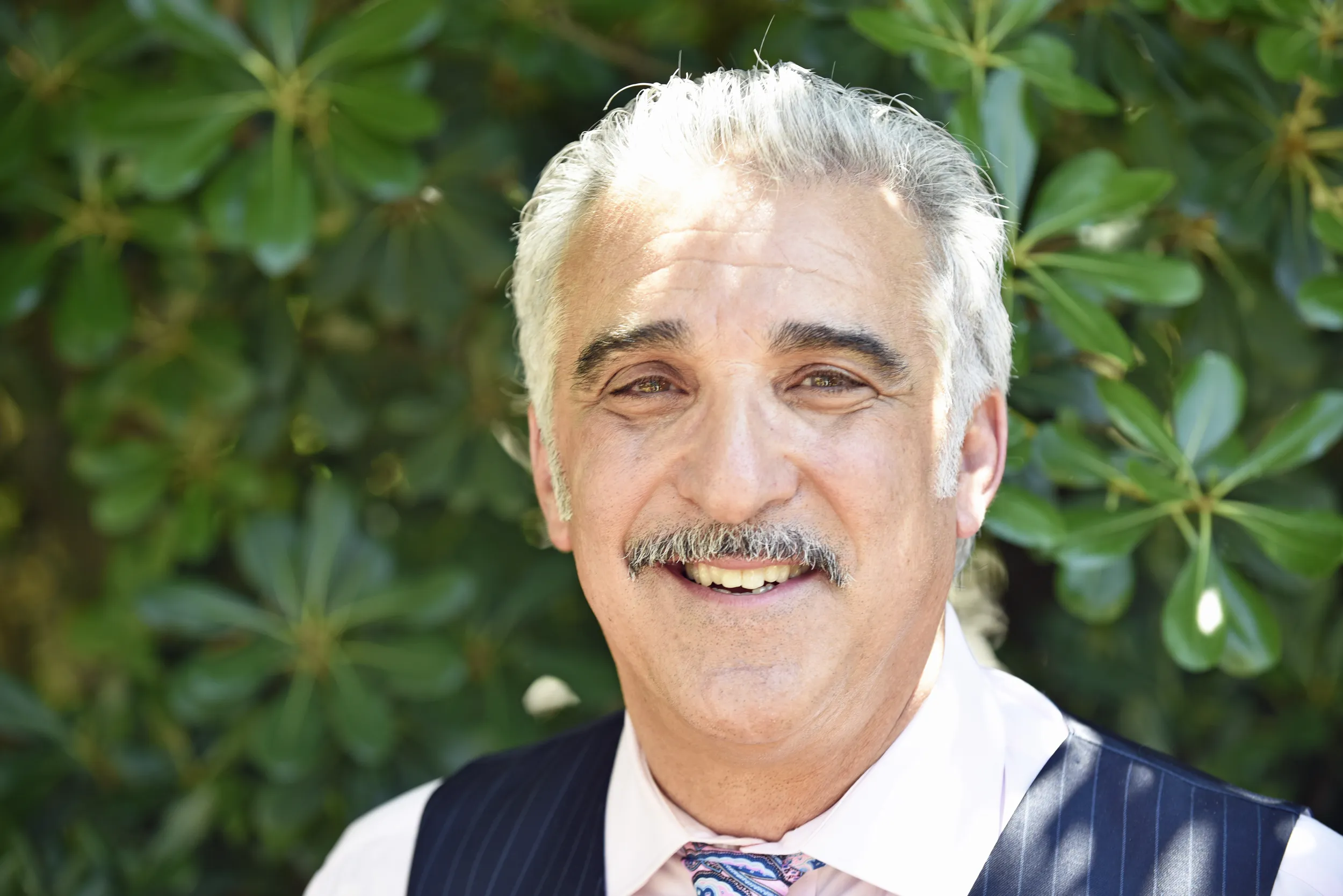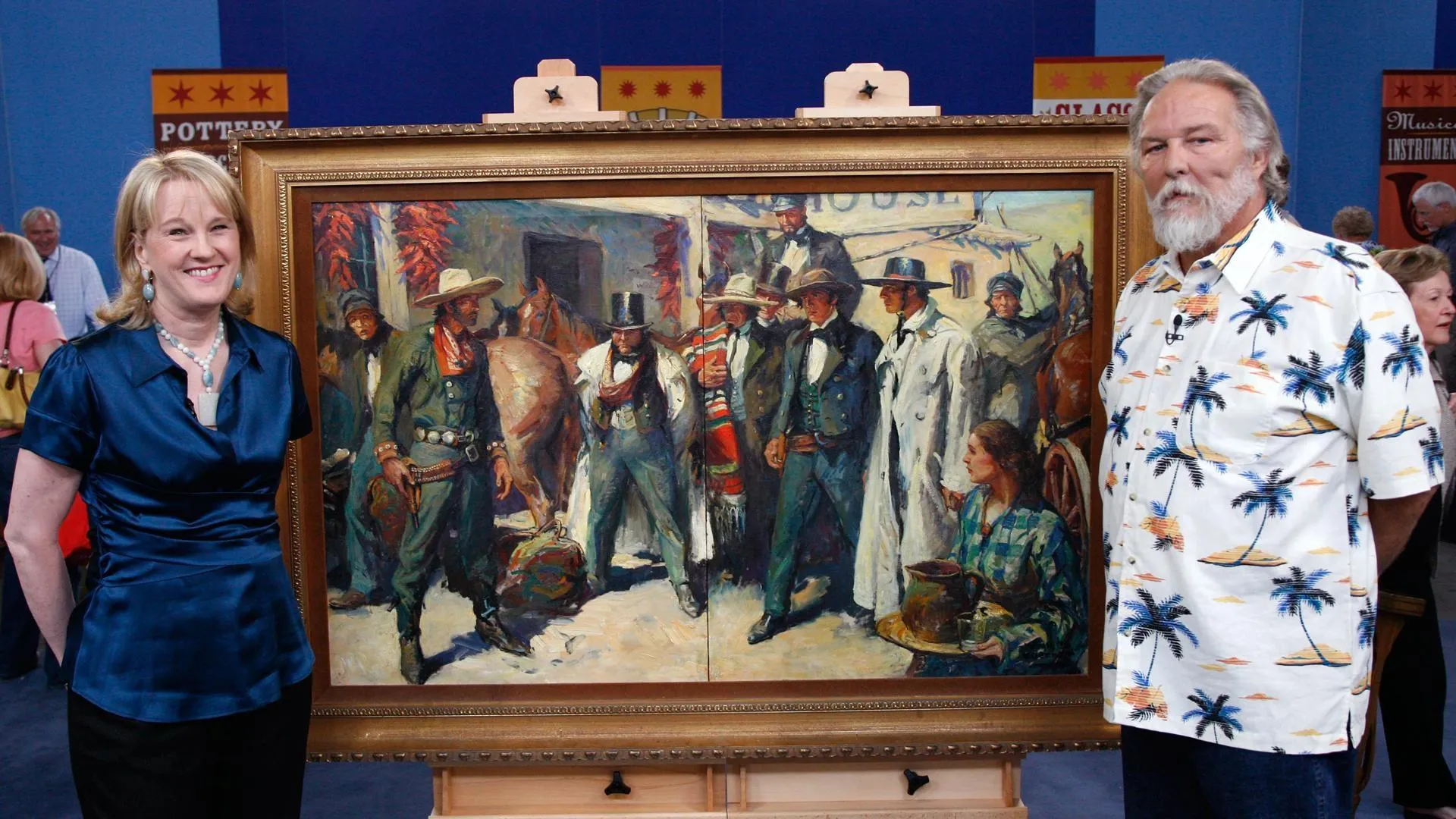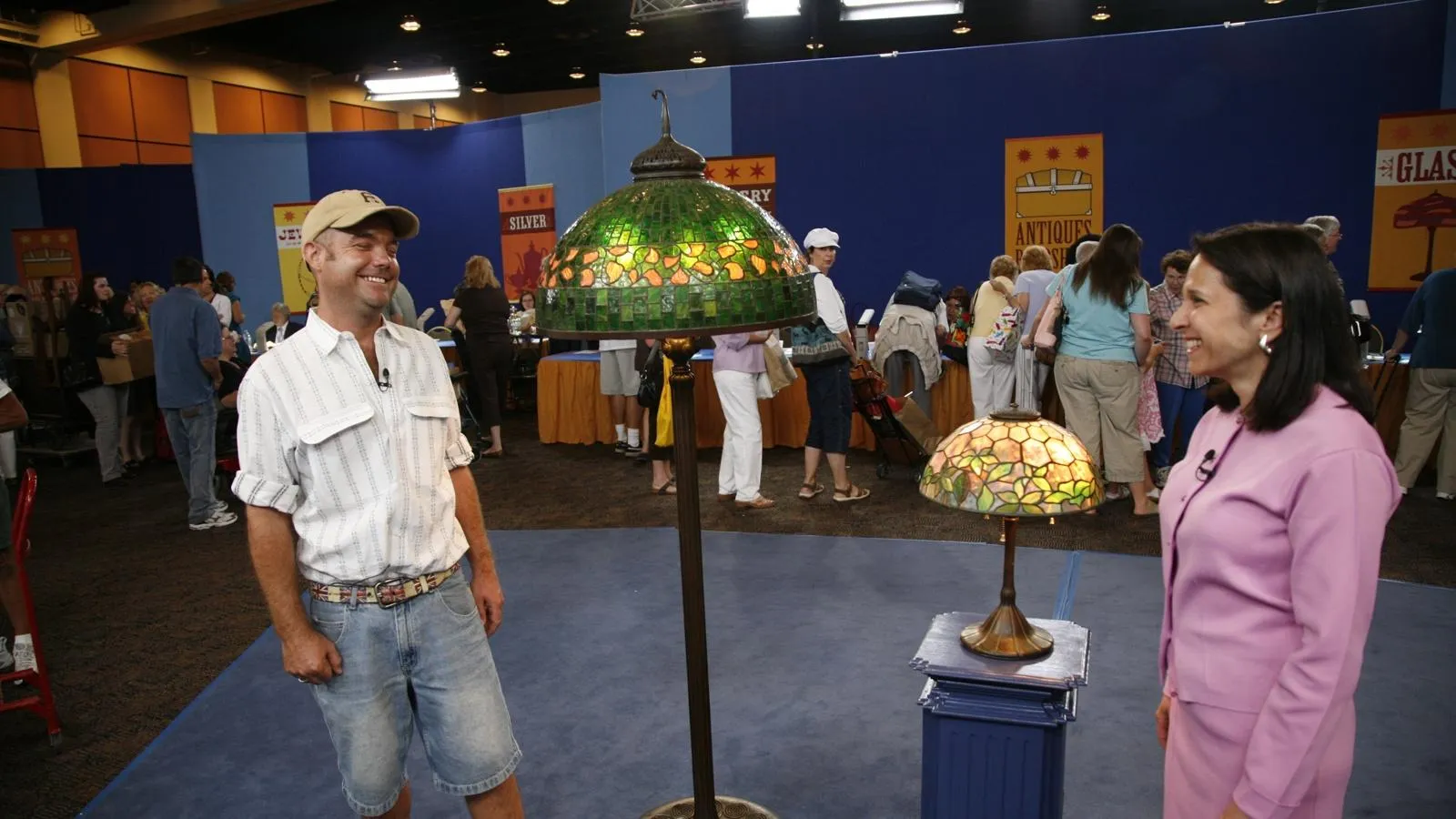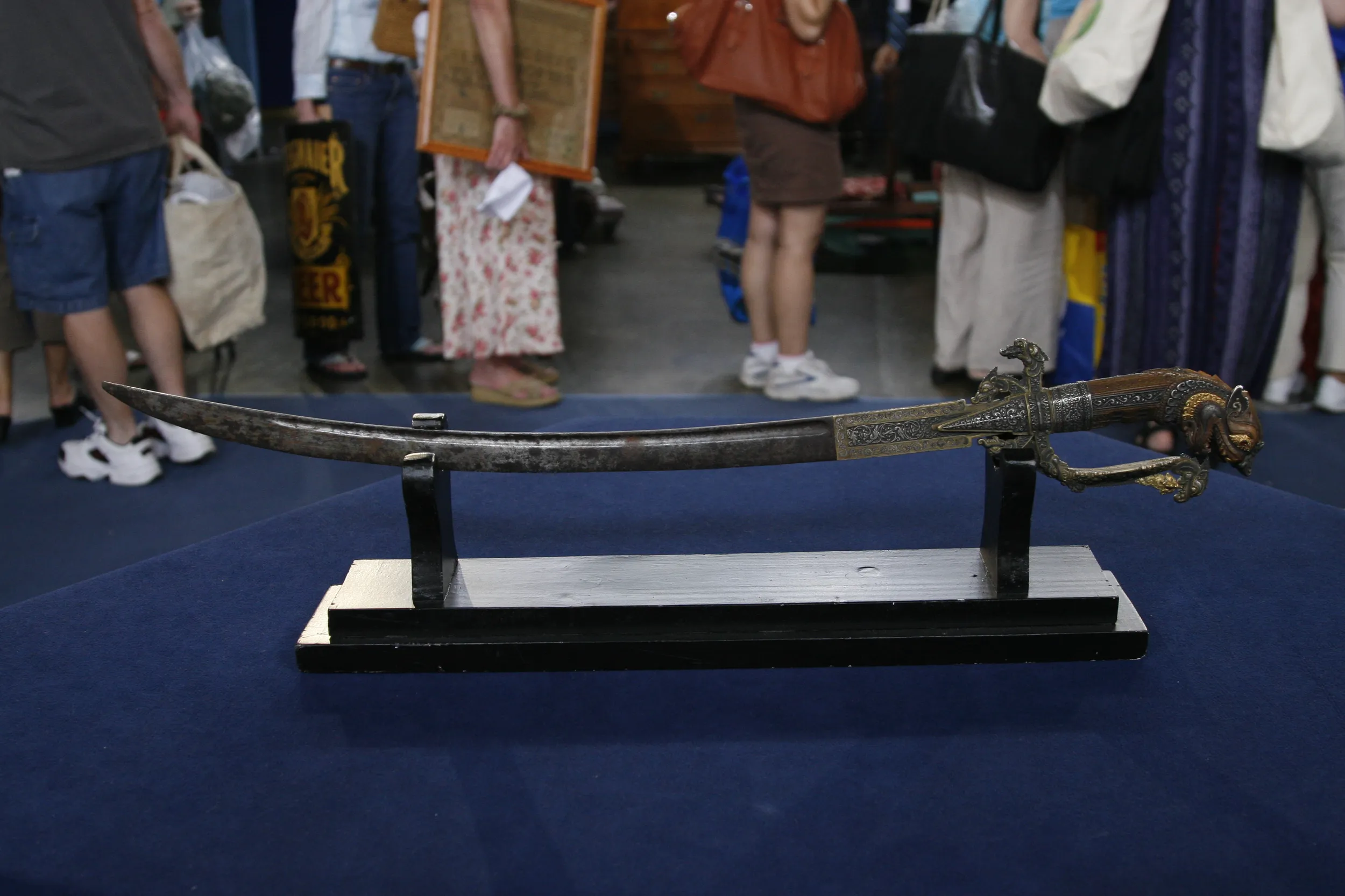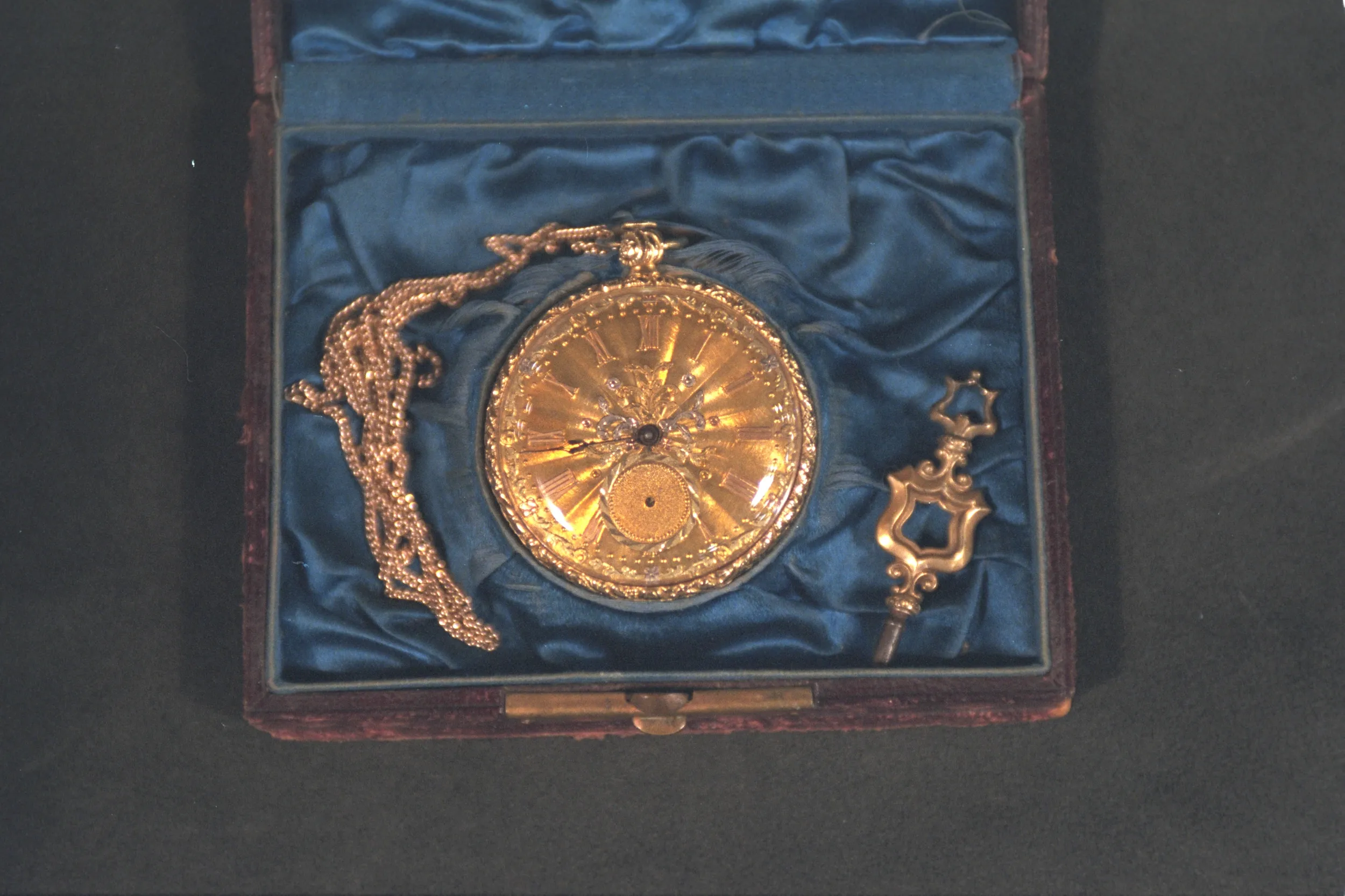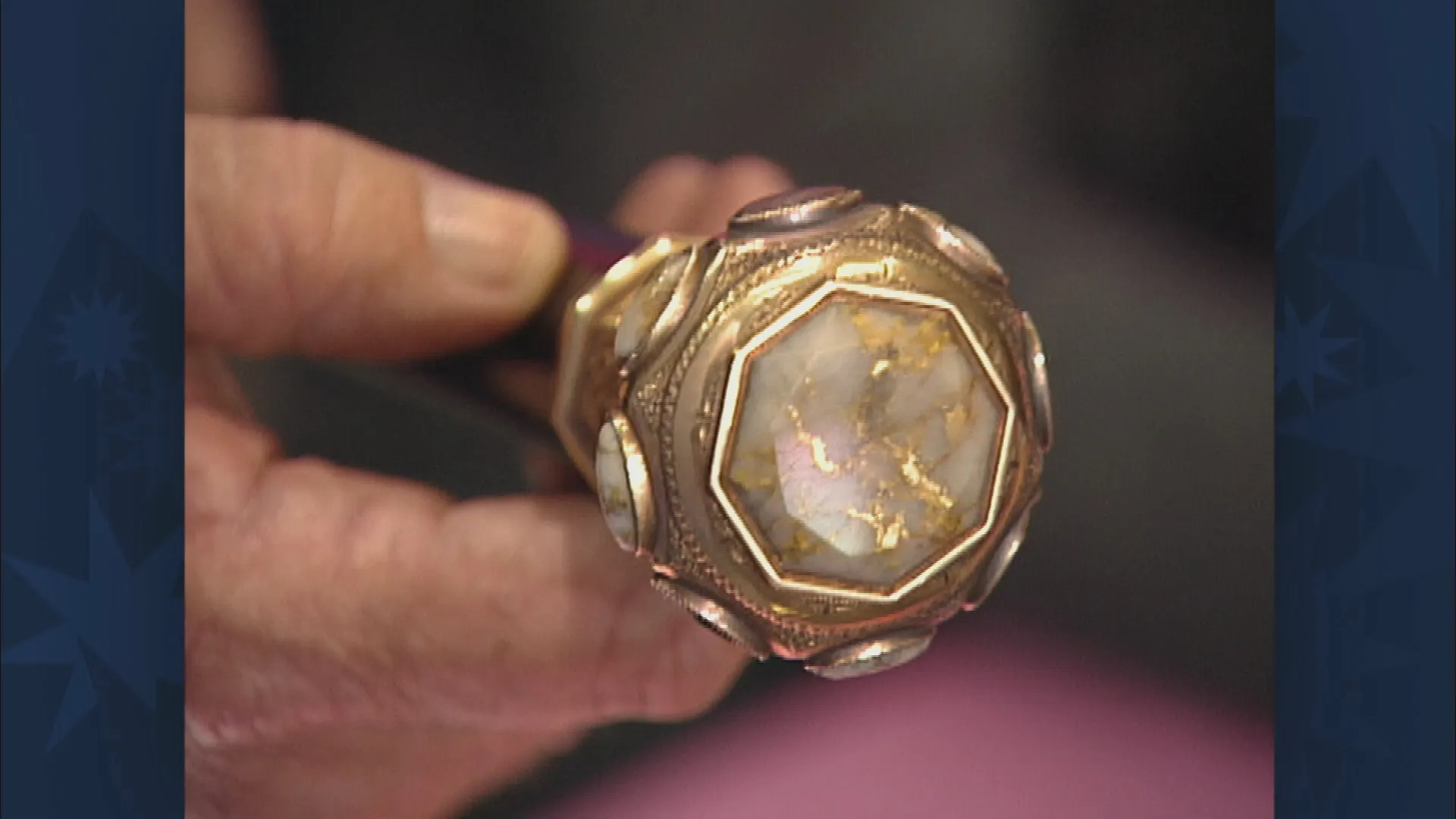GUEST: This watch belonged to my grandfather. He was a watchmaker, and it got handed down to my father and then to me. And I've had the watch, uh, for about the last 40 years.
APPRAISER: Where have you been keeping it?
GUEST: In the safe. It hasn't seen daylight except for maybe today and a couple of other times. And I know almost nothing about it because I can't find a name on it, a maker's name.
APPRAISER: Okay, it's a perpetual moon phase calendar watch. We would say it has a lot of bells and whistles, if you will.
GUEST: Yeah, we call it the fancy, no-name watch. (laughs):
APPRAISER: There you go. Usually, a watch would have a maker's name somewhere over here. And a lot of companies did make them generically to be branded by the retail store later on. And a lot of times, they went out and that didn't happen. It's a lever set-- you pull this lever down, and then you set the time. You push the lever back in, and then you can wind it. Over here, on this subsidiary dial, we have numerical date. We go over here, you have the day written in French. Down below, you have a classic subsidiary second hand with the moon phase. Then we go to the top-- this is one of the best parts. It's a perpetual calendar, so it gives the months. Being perpetual, what it does is, once every four years, just for leap year. It also has a nice little feature. You see this button up top?
GUEST: Yes.
APPRAISER: It's a chrono, so you could use it as a stopwatch. So we push this button. And you can see the second hand moving around.
GUEST: Uh-huh.
APPRAISER: We push the button again to stop it, and then we push the button again to return.
GUEST: To return.
APPRAISER: Now, it's also a repeater. I'm going to activate the repeater now. It's with this slide right here.
ITEM: (watch chiming)
APPRAISER: You told me something when we were at the table. What did you say?
GUEST: Last night in the hotel, I was looking at it. And I didn't have my glasses, and I, and I saw something underneath the, the dinger, but I couldn't, I couldn't read it.
APPRAISER: Well, there was a company that did hide it under the hammer. I'll chime it again.
ITEM: (watch chiming)
APPRAISER: So right under this hammer, the top one, it says LeCoultre.
GUEST: Oh.
APPRAISER: Antoine LeCoultre, he formed the company about 1833. He basically was in the business of making Èbauches, which is the engine or the movement for the watch. But soon after that, they got into manufacturing watches. This was most likely made in the later part of the 1800s. It's what we call a hunting case. And it's very heavy, very solid. It also has an interesting feature, which a nice watch like this would. It has what we call wolf's teeth winding.
GUEST: Okay.
APPRAISER: The teeth are like those on a circular saw. So you put all this together, and now we know it's LeCoultre.
GUEST: Yeah.
APPRAISER: Any feelings on what you think it's worth?
GUEST: Well, at the time, I thought maybe $5,000, because it's a, I think it's a gold case, 18-karat, but no name, so I was thinking maybe about $5,000.
APPRAISER: You have to seriously consider this, at auction today, somewhere between $35,000 and $40,000.
GUEST: No!
APPRAISER: Yep.
GUEST: Jeez.
APPRAISER: That's fantastic, huh?
GUEST: It's... (chuckles): Wow. Thank you. (laughs)
APPRAISER: You're welcome. (chuckles)
GUEST: Are you seri... Really?
APPRAISER: Yeah! Yeah, I'm not kidding you! Really.
GUEST: Jeez!
